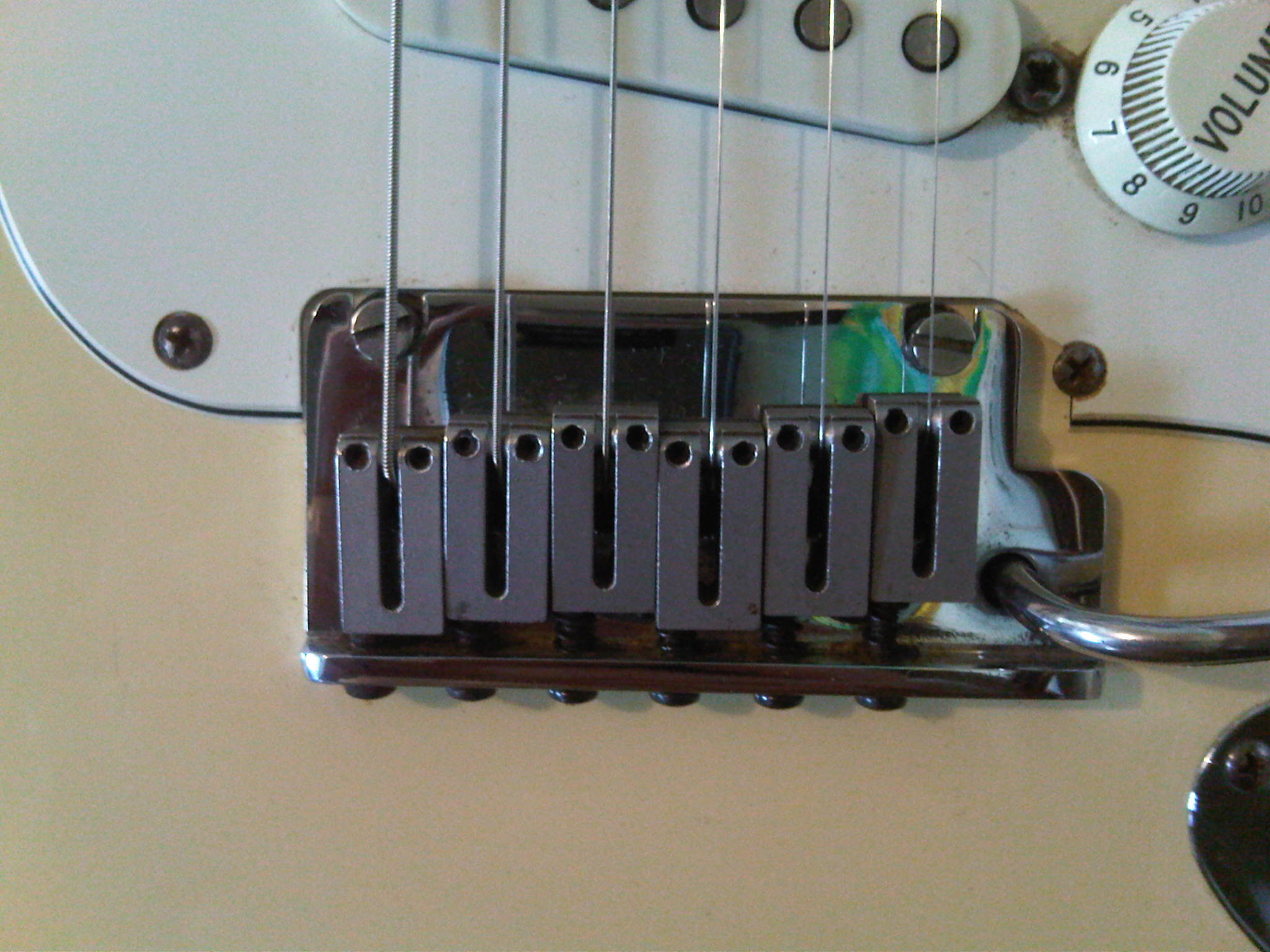Hot Rodding an Early '80s Squier Telecaster, Part 11: Adjusting the Intonation

The set-up:I'm modifying an early-'80s ash-bodied Squire Telecaster that is all original and in very clean condition. Its appointments include a 21-fret maple neck, vintage-style bridge and pickups and Fender Japan branded sealed gear tuners.
Changes I will make include installing a Callaham Vintage Tele bridge, Lollar Special-T single coils, CTS brand pots and a four-way switch. This switch allows the option of having both pickups available in series and in parallel besides either pickup by itself. Sperzel locking tuners round out the component mods and will make sure this axe stays in tune. I also will install Jescar stainless steel medium-jumbo frets and a bone nut.To check out parts one through 10 of this series, look for the stories under RELATED CONTENT to the left.OK, we’re back and ready to begin. Before we get into the practice of intonation, let’s spend a couple more minutes talking setup.When the neck of a guitar (or bass or mandolin, etc) is evaluated for setup, measurements are usually in thousands of an inch. Three thousandths is notated as .003-inch. The average U.S. bill currency is .004-inch thick. Trained fingers can tell a difference of less than .001-inch.As it pertains to guitars, an adjustment of .002-inch higher or lower can make a very noticeable change in playability. Many manufacturers provide exact measurements spec’d out for their models. Fender’s website has recommended setups listed for many (or all?) of their instruments. Wanna copy Mark Knopfler’s setup? It’s right there.Being able to accurately measure small spaces is a valuable skill. It makes it possible to attain the same setup over and over again. However, it takes practice to get this skill together, and it is best to learn from a person, in person. So, for now, use the “If it feels good, go with it” method. Even if you cannot measure a good setup, it is still good. If you are motivated to learn to measure accurately, go find someone to teach you.OK! The guitar is an even-tempered instrument. This is a somewhat complicated concept. In an over-simplified nutshell, it allows players of different Western instruments to play together in all 12 keys and be in-tune in all of them, more or less. I encourage you to do some reading on even temperament and just temperament. It is a fascinating topic. And you’ll learn about Pythagoras.Intonation involves adjusting the string length of individual strings to deal with, as much as possible, the flaws of even temperament. It’s a critical step in setup, especially if you play with other musicians, or wish to. The adjustments are not difficult to make, but the process can try your patience. Adjusting the neck or bridge will affect the intonation. Especially when there is a whammy bar involved. If you are attempting an exact, measured setup, be prepared to focus and dedicate yourself to checking and adjusting all string heights and intonation repeatedly until everything meets the spec. You’ll need a high-quality tuner. I use the Peterson StroboFlip. It is accurate to +/- .1 cent. Comparatively, most tuners provide accuracy to +/- 1 cent. That’s a big difference and to me, worth the extra money.Additionally, gather a cable and whatever tool is used to adjust the saddles on your bridge. If you or your “friend” has never dorked around with your bridge setup, chances are pretty good that the intonation is sort of in the ballpark. If you are setting up a new bridge or making a big change in tuning (Eb to C, for instance), you are in for a little more work. Tune the guitar to the tuning the player will use most. That’s probably standard tuning, but use whatever twirls their beanie. Now, switch to tuning at the 12th fret using natural harmonic tones. Plan to use this approach on all strings, one by one. Pluck the chime at the 12th fret and tune until you get the green light, or whatever your tuner does when it hears the correct pitch. Now, fret the same string normally at the same location and sound the note. You will get one of three possible results: Sharp, flat or in tune. If the reading is flat, the corresponding string saddle needs to be moved forward (toward the nut). Remember, Flat = Forward. If the fretted tone reads sharp, the saddle needs to be moved back, away from the nut. Repeat the process until the fretted note and the harmonic tone give you the same reading on your tuner. Remember that each adjustable aspect of a guitar can affect intonation. So do not get lazy halfway through this process and just give up, OK? Poor intonation can actually be heard. No matter how much you tune a poorly intonated instrument, it will never sound like it is in tune. You wanna be in tune, right?There are more specifics in the photo gallery, so have a look. Cheers!Marlin Hall is a self-taught guitarist with 27 years of experience and a strong DIY ethic, gigging on blues, cover tunes and original rock music on both coasts and in Minneapolis since 1991. Hall, a former sound engineer in Minneapolis, recently graduated from a guitar-building and repair program and provides repair and custom-guitar-building services in the Twin Cities area. For more info, visit lowstrungguitars.com or timbuildsguitars.blogspot.com.







All the latest guitar news, interviews, lessons, reviews, deals and more, direct to your inbox!
